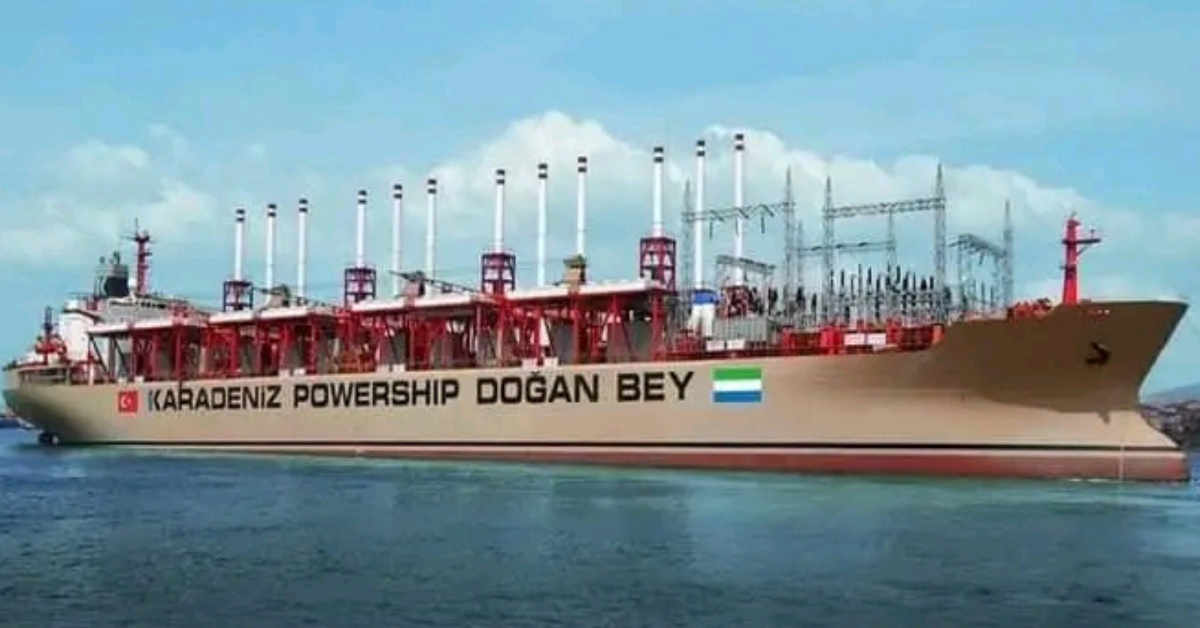The government has acknowledged that there were large fiscal risks posed by Electricity Distribution and Supply Authority EDSA and that projected payments to Karpower under the new contract amount to US$70 million in 2022.
According to their Revised Memorandum of Economic and Financial Policies(MEFP) Extended Credit Facilities(ECF) 5th Review, the government told the International Monetary Fund (IMF) that as part of their expenditure management measures to lower energy subsidies, they will strengthen EDSA’s revenue generation.
This will be done through measures that include adjustment of the average tariffs; connecting two mining companies to the grid and upgrade the Bumbuna 161 line to increase the uptake from the CLSG line into the national grid and working with the World Bank to decrease commercial and technical losses while maintaining the lifeline tariff band (ie those who consume less than 25kWhper month) to protect the poor.
These measures the government said are expected to open up some fiscal space by reducing EDSA’s dependence on budget transfers. However, the energy sector presents a significant risk to the government budget, growth potential, and emissions-reducing goals. In 2021, the largest electricity supplier cut off power due to unpaid bills by the government.
In their IMF Country Report No. 22/259, the IMF staff noted that the government is strengthening the revenue model for the Electricity Distribution and Supply Authority (EDSA), installing pre-paid meters in all government buildings, and reducing illegal power connections, among other measures to reduce dependence on budget transfers. This they say should help to lower EDSA’s reliance on budget transfers and free up fiscal space.
In addition, they went further to explain that the security of a reliable energy supply is one of the key impediments to economic and social development. The country’s installed power capacity as of 2018 is about 105 MW for a population of over 7 million.
The reports said that EDSA has Long-lasting high commercial and technical losses (around 38 percent). Its balance sheet has further deteriorated as the cost of purchasing electricity has increased, including as depreciation increased the value of dollar-denominated obligations to Karpower.
Meanwhile, tariffs have remained constant from 2019 till it was increased in 2022, putting additional pressure on the government budget (increase in subsidies US$42in 2022).
As part of the reforms, the government they say will be implementing comprehensive energy sector reforms supported by the World Bank, which aim to improve EDSA’s operational efficiency, increase generation capacity, and improve connection infrastructure.
To increase revenue, the government plans to review electricity tariffs, which are currently at US$0.13 cent per Kwh, while maintaining the social band and connecting two mining companies to the grid.
EDSA also aims to decrease losses to 35 percent by replacing meters to combat power theft and by installing pre-paid meters in government buildings.
To phase out reliance on Karpowership, EDSA can further scale up purchases from cheaper sources, such as the Cote d’Ivoire-Liberia-Sierra Leone-Guinea(CLSG) power pool, and further invest in renewable energy.
The government is also investing in transmission lines and completing rural electrification projects.
Development partners are also supporting efforts to strengthen corporate governance incentives to improve EDSA’s viability.



 Post a comment
Post a comment










Comment(s)
Disclaimer: Comments expressed here do not reflect the opinions of Sierraloaded or any employee thereof.
Be the first to comment